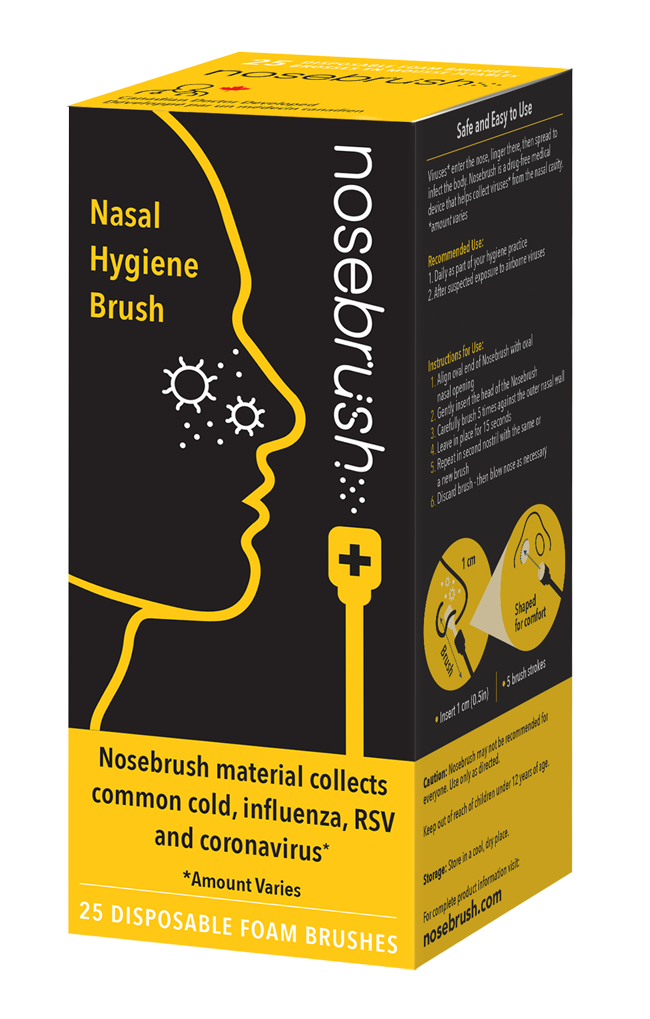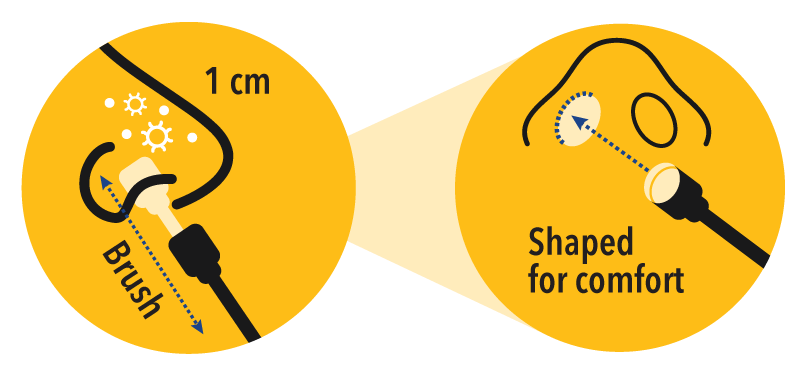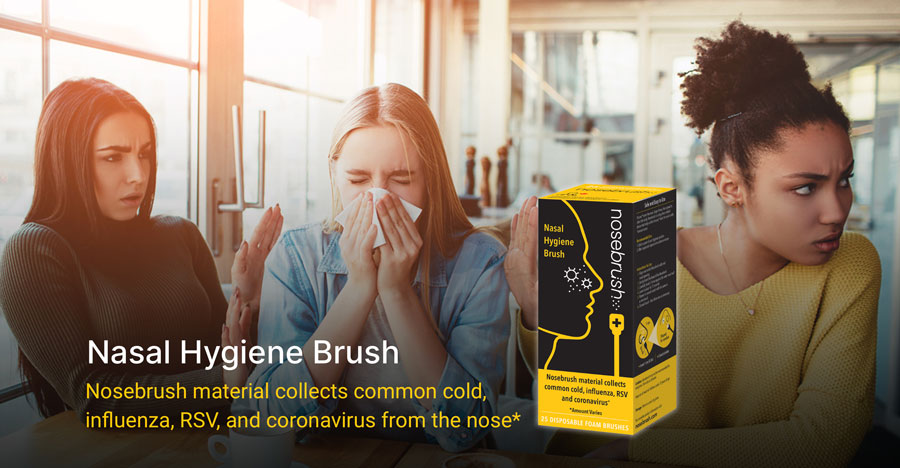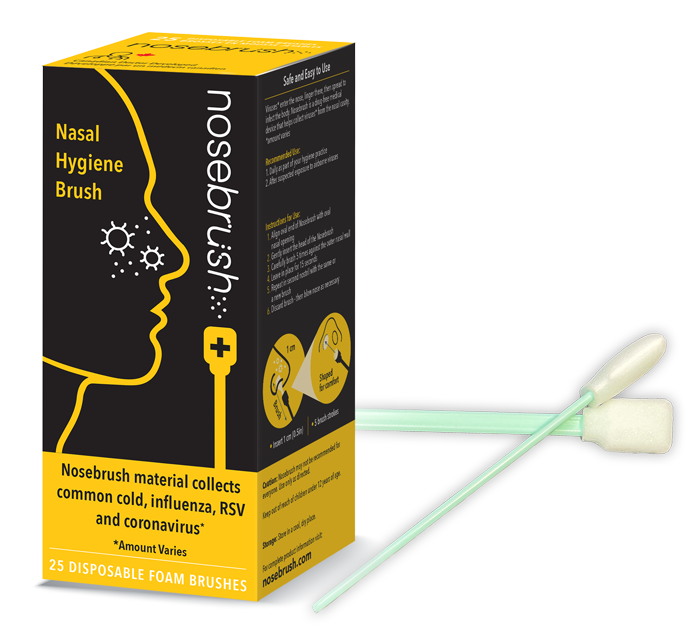
What is Nosebrush?
Nosebrush is a class 1 medical device made with a material that collects common cold, influenza, RSV and coronavirus from the nose*
Why Nosebrush?
Viruses cause infection by first entering your nasal cavity, linger then move into your respiratory tract and other systems. (4)
These viruses can linger in your nasal cavity for 1-3 days before they enter the body. (3)
Nosebrush is constructed with polyurethane material. Evidence has shown that this same material collects common cold, influenza, RSV and coronavirus*. (1) (2)
Nosebrush is a drug-free medical device.
Nosebrush cleans and helps collect viruses lingering in the nose*

Shaped for comfort & easy to use
Align oval end of Nosebrush with oval nasal opening
Gently insert the head of the Nosebrush
Carefully brush 5 times against the outer nasal wall
Leave Nosebrush in place for 15 seconds
Repeat in second nostril with the same or new brush
Discard, and blow nose as necessary

When to Use:
Daily as part of your hygiene practice
After suspected exposure to airborne viruses – Including work, clubs, restaurants, school, gym, close contacts
Nosebrush can be used as often as necessary
The Pandemic Has Changed Our Lives
- The pandemic has changed people’s habits and lives permanently
-
Nosebrush is a device for families, people on the go, and individuals who want to augment their additional hygiene regimen with a device shown to collect viruses.*
How does it work?
Viruses cause infection by entering your nose
Viruses linger in the nose before they enter the body to cause infection
Nosebrush is a drug-free medical device that has the head constructed with polyurethane material. Evidence has shown that this same material collects common cold, influenza, RSV and coronavirus* (1) (2)

Nosebrush is a Class 1 Medical Device, constructed with a polyurethane material that was proven to collect viruses*.
The material of the head of the brush is a very specialized product that has studies demonstrating that it collects common cold, influenza, RSV and coronavirus*
The collected viruses can then be removed from the nose*
FAQ:
What is the impact of viral illness on Canadians?
- Influenza: In Canada, there are 3,500 deaths, 12,200 hospitalizations, 14 work-hours lost per person per year
- Common Cold: Rhinovirus is the most frequent infectious disease in humans. The average adult gets a cold 2-5 times annually, and the average child 6-12 times annually. Antibiotics do not work against the common cold
- RSV: Respiratory Syncytial Virus is a cause of wheezing (Bronchiolitis) and pneumonia in infants. It is a cause of Asthma in children
- Para-influenza: Commonly known as Croup, this virus causes fever and narrowing inflammation of the upper airways






